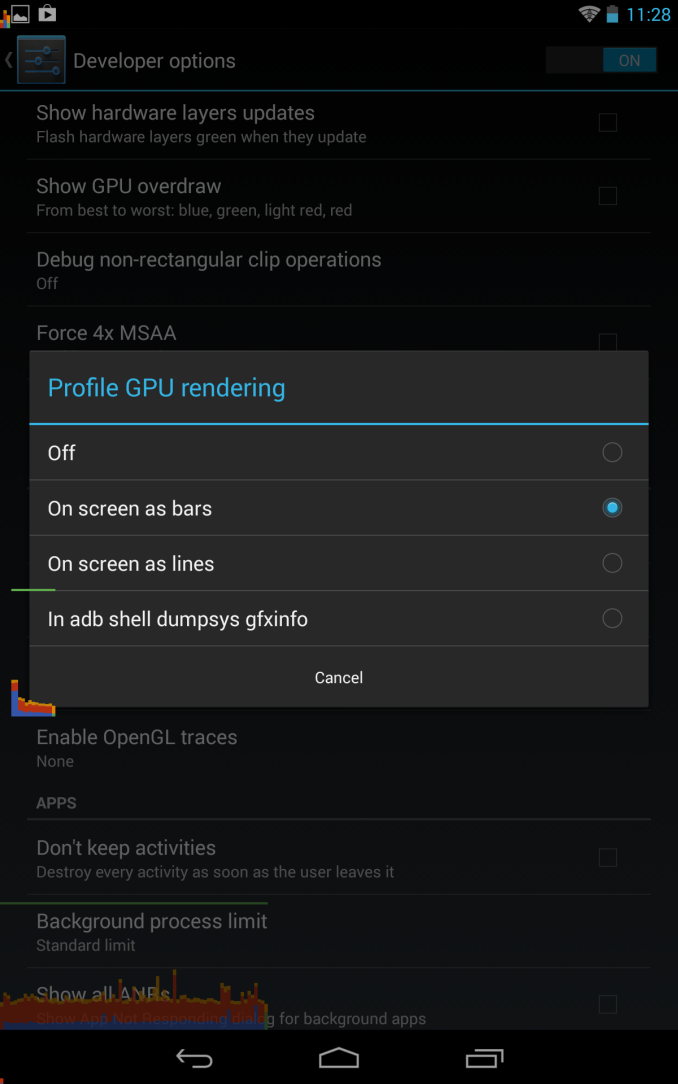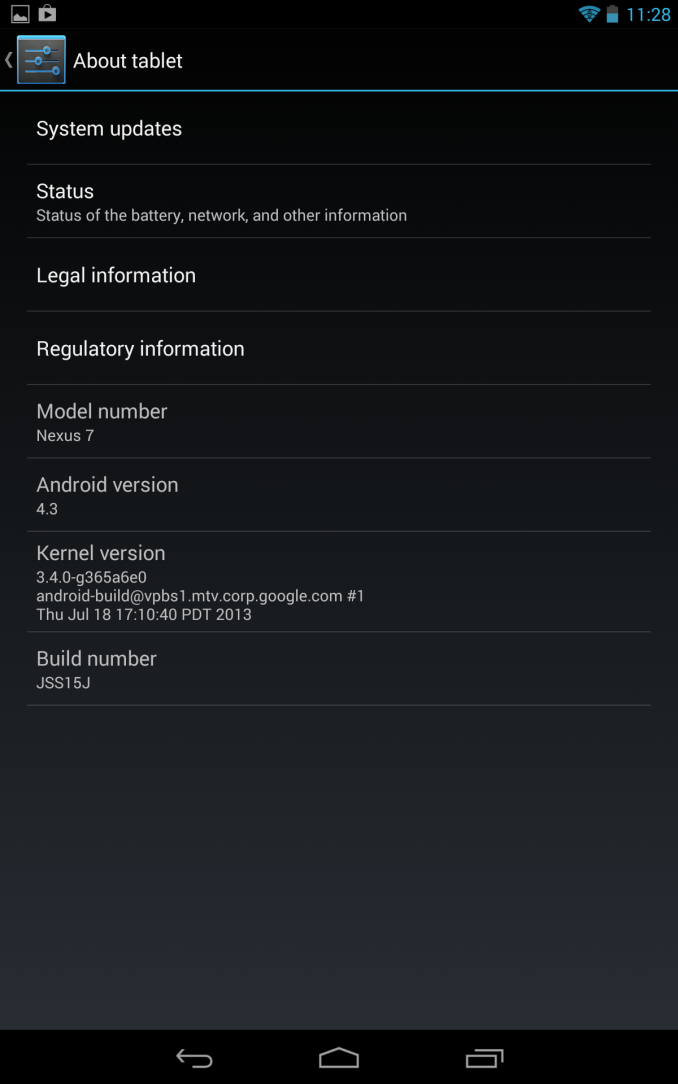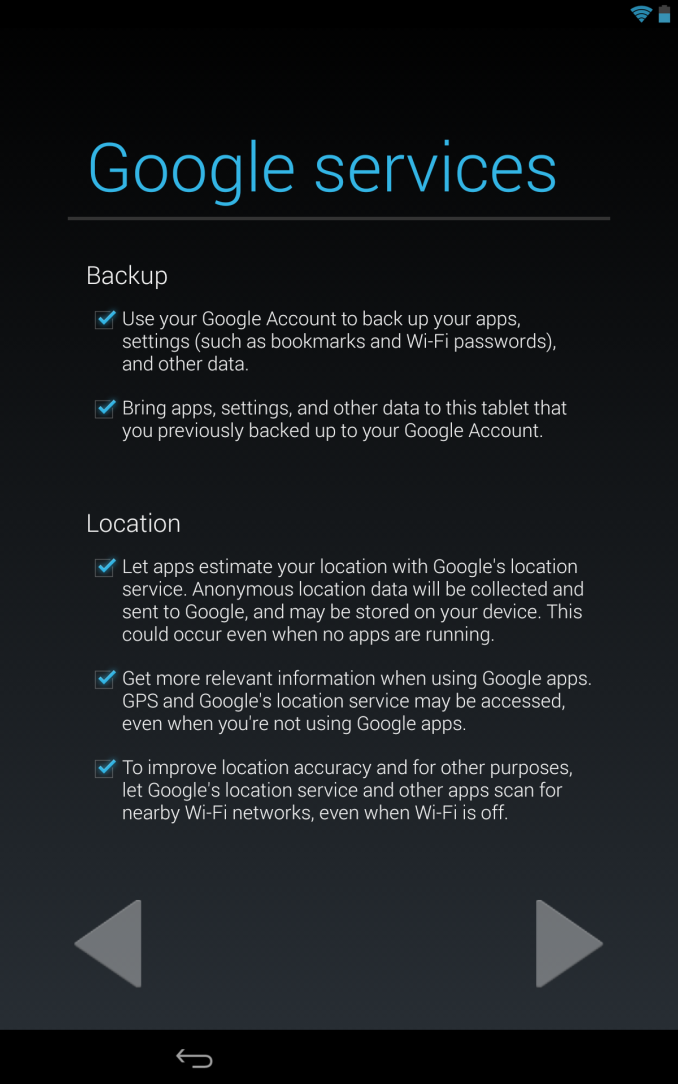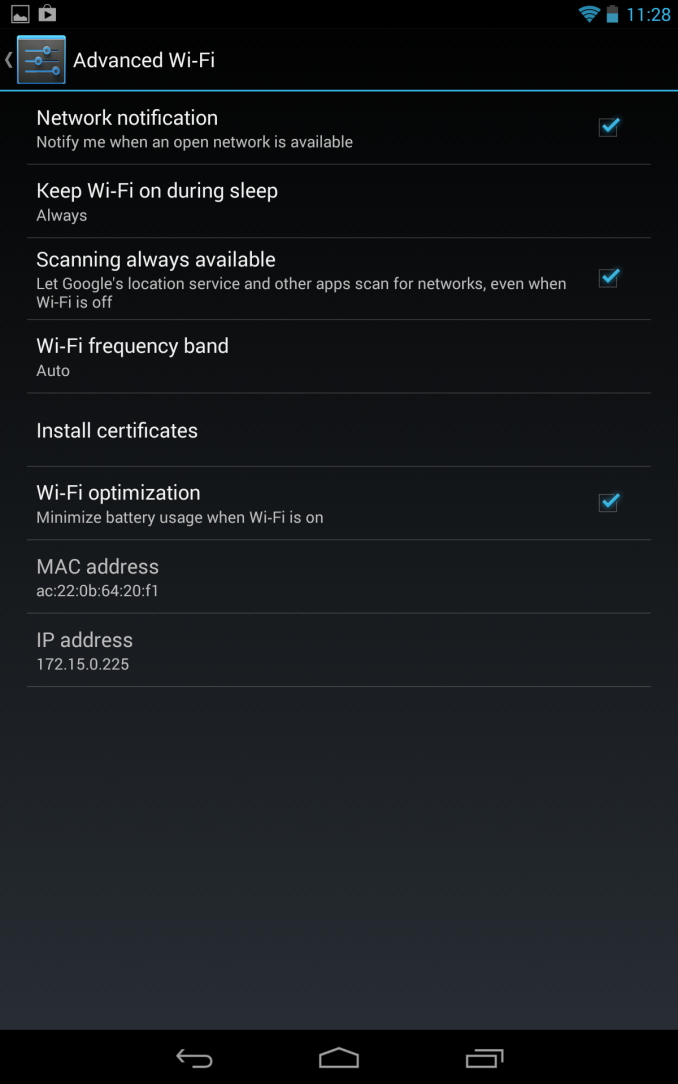What's New in Android 4.3
by Brian Klug on July 24, 2013 2:26 PM EST- Posted in
- Smartphones
- Android
- Mobile
- Tablets
- Android 4.3

As expected, today Google made a management release for Android 4.2 official at their breakfast with Sundar event, bumping the release up to Android 4.3 and introducing a bunch of new features and fixes. The update brings everything that Google alluded was coming during Google I/O, and a few more.
On the graphics side, the big change is inclusion of support for OpenGL ES 3.0 in Android 4.3. Put another way, Android 4.3 now includes the necessary API bindings both in the NDK and Java for ES 3.0. This release brings the numerous updates we’ve been over before, including multiple render targets, occlusion queries, instances, ETC2 as the standard texture compression, a GLSL ES 3.0, and more.
We’ve also talked about the changes to the 2D rendering pipeline which improve performance throughout Android, specifically intelligent reordering, and merging, which cuts down on the number of draw calls issued to the GPU for 2D scenes. This improvement automatically happens with Android 4.3 and doesn’t require developer intervention, the pipeline is more intelligent now and optimizes the order things are drawn and groups together similar elements into a single draw call instead of multiple. In addition like we talked about, non-rectangular clips have hardware acceleration, and there’s more multithreading in the 2D rendering pipeline.
Google has been trying to increase adoption of WebM and along those lines Android 4.3 now includes VP8 encoder support for Stagefright. The platform APIs are updated accordingly for the ability to change settings like bitrate, framerate, and so forth. New DRM modules are now added as well, for use with MPEG DASH through a new MediaDRM API.
On the connectivity side we get a few new features, first is the WiFi scan mode which we saw leaked in a bunch of different ROMs. This exposes itself as a new option under the Advanced menu under WiFi settings, and during initial out of box setup. This new scanning mode allows Google to continue to further build out its WiFi AP location database to improve WiFi-augmented location services for its devices.
Like we saw hinted not so subtly at Google I/O, 4.3 also includes support for Bluetooth low energy (rebranded Bluetooth smart) through the new Broadcom-sourced Bluetooth stack. This OS-level support for BT Smart APIs will do a lot to ease the API fragmentation third party OEMs have resorted to in its absence.
Likewise Bluetooth AVRCP 1.3 is now included which supports better metadata communication for car audio and other devices, as well as better remote control.
Security gets improvements as well, Android 4.3 moves to SELinux MAC (mandatory access control) in the linux kernel. The 4.3 release runs SELinux in permissive mode which logs policy violations but doesn’t break anything at present.
A number of other security features are changed, including fixes for vulnerabilities disclosed to partners, better application key protection, removal of setuid programs from /system, and the ability to restrict access to certain capabilities per-application. Lastly there’s a new user profiles feature that allows for finer grained control over app usage and content.
We'll be playing around with the new features on the new Nexus 7 as well as the other Nexus devices getting the update (Nexus 4, Nexus 10, Nexus 7 (2012), and Galaxy Nexus). Google has already posted the factory images for those devices as well if you're too impatient to wait for the OTA and want to flash it manually.
Source: Google


















69 Comments
View All Comments
EnerJi - Wednesday, July 24, 2013 - link
I did not know about this app, thank you. It seems Google has already solved this problem, but only for Google Apps users! Per the app description: "***THIS APP IS FOR GOOGLE APPS FOR BUSINESS, EDUCATION, AND GOVERNMENT USERS ONLY***"Also, I tried navigating to the web page to locate devices, and after signing in with my google account I was admonished to sign in with my Google Apps account instead.
I'm puzzled as to why Google hasn't opened this up to everyone?
EnerJi - Wednesday, July 24, 2013 - link
Additionally, where are the improvements to the stock Android Exchange/IMAP email app? The stock email app is atrocious, and has been for years. An Android developer has repeatedly posted that changes are coming eventually and to be patient, but this is starting to get ridiculous.It's one of the few areas where I'm jealous of WP7/8 and iOS (and incidentally one of the few areas where a non-stock Android is better than stock, as the major manufacturers replace the stock email app with an improved version of their own.)
Spoelie - Thursday, July 25, 2013 - link
You might want to reevaluate that statement, as the IOS email app at least is several grades below what the *gmail* app (both on IOS as Android) can do, even for basic functionality. It's nowhere near worthy of envy.I haven't used stock android email for quite a while, so am in no position to draw any comparisons there.
EnerJi - Thursday, July 25, 2013 - link
Trust me, there's no comparison. I've used the iOS email app on iPhones and iPads, and it's not fancy, but it has solid support for Exchange policies and works well. The stock android email app (which is for some inexplicable reason completely separate from the Gmail app) is used for IMAP and Exchange email accounts, and is a completely different story.NickDG - Sunday, July 28, 2013 - link
I use an iPhone 5 for work email and a Nexus 4 for personal use. I used to use my Galaxy SII and SIII for Active Sync email. I don't see a huge difference between Android EAS and iOS EAS, though I would say iOS is better. Also I believe Microsoft released an Outlook app for Android that only works with Office 365 accounts. Not ideal but its a start.EnerJi - Tuesday, July 30, 2013 - link
I did a quick search for this app but couldn't find it - a link would be appreciated.I'm fairly sure Samsung replaces the AOSP app for ActiveSync email with their own app (which may or may not be based on the AOSP version), and is likely a much better user experience. As a Nexus 4 user, I get the base AOSP app, which is crap.
steven75 - Thursday, July 25, 2013 - link
Reread his statement. It's quite common to use an email provider other than gmail. Android is terrible for this and is pretty much the exception in the mobile market when it comes to built-in support.jamyryals - Wednesday, July 24, 2013 - link
"the ability to restrict access to certain capabilities per-application"Whoa, this is huge. I had not heard of this yet.
marc1000 - Wednesday, July 24, 2013 - link
How is use the GPS navigation working on 4.3? recently google integrated it into Maps and eliminated the blue arrow icon, causing a lot of frustration among users.Personally, direct and easy access to a good gps navigator is a major feature required on any phone. if 4.3 does not have dedicated gps access, i will look on Lumia phones for my next upgrade.
https://productforums.google.com/forum/m/#!msg/map...
sprockkets - Wednesday, July 24, 2013 - link
Why would you need it to be separate? You enter in your destination and then navigate.